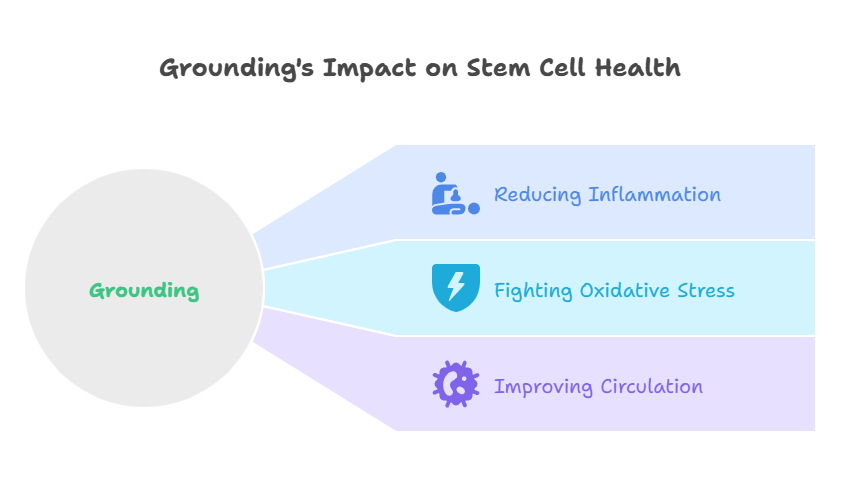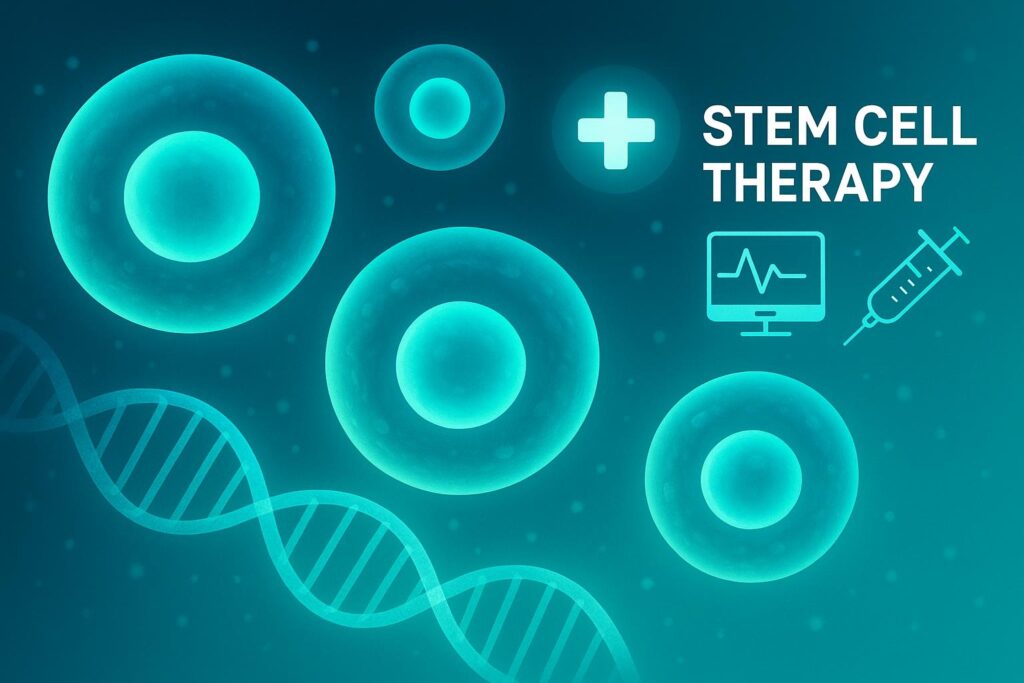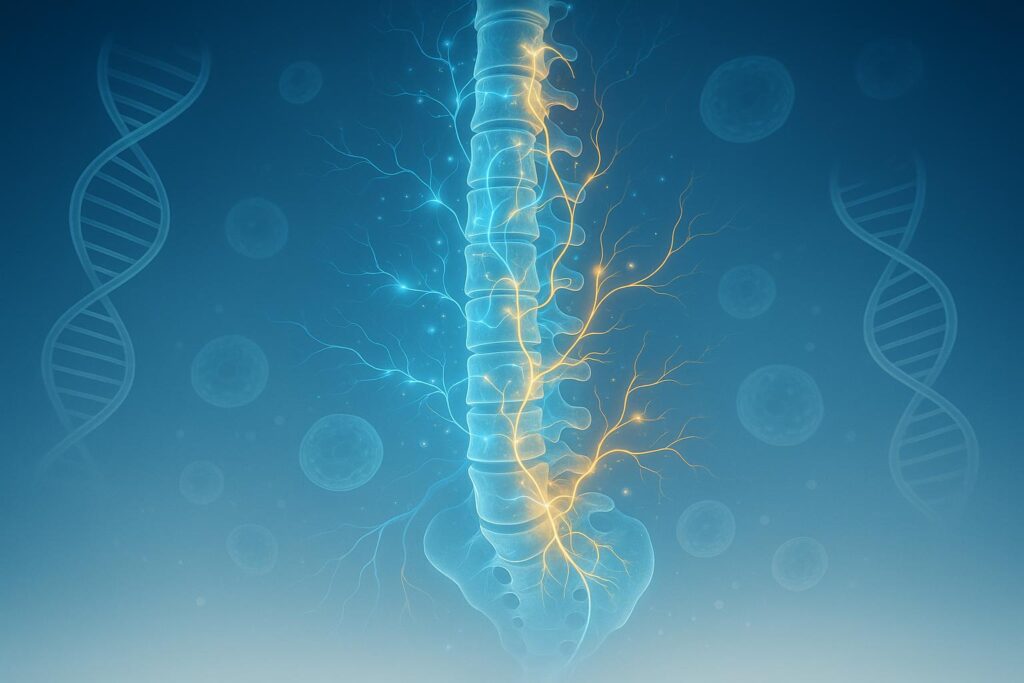Have you ever wondered if there’s a simple, natural way to support your body’s own repair mechanisms?
As we age, our ability to heal and regenerate tissues declines, and scientists believe this is linked to the health of our stem cells.
But what if a direct connection with the Earth could help preserve these vital cells?
This article explores the fascinating science behind grounding (or earthing) and its potential benefits for our stem cells.
We will examine the latest research to understand how this simple practice might reduce inflammation, fight oxidative stress, and create an optimal environment for your stem cells to thrive.
We will also look at the practical ways you can incorporate grounding into your life to support your long-term health and well-being.
What is Grounding?
Grounding, also known as earthing, is the practice of connecting your body directly with the Earth’s surface. This can be as simple as walking barefoot on grass, sand, or soil.
The Earth has a natural, gentle negative electrical charge. Proponents of grounding believe that this direct contact allows a transfer of free electrons from the earth into the body.
These electrons are thought to have powerful antioxidant effects, helping to neutralize harmful free radicals and reduce inflammation.
While the concept may sound simple, a growing body of scientific research is exploring the physiological benefits of grounding.
Studies have shown that it can improve sleep, reduce pain, lower stress, and support the body’s natural healing processes.
Understanding Stem Cells
Stem cells are the body’s raw materials — cells from which all other cells with specialized functions are generated.
They are unique because they can divide to form more stem cells or differentiate into specialized cells like muscle cells, brain cells, or bone cells.
This remarkable ability makes them essential for growth, repair, and regeneration throughout our lives.
There are different types of stem cells, but the ones most relevant to grounding research are adult stem cells. These include mesenchymal stem cells (MSCs), found in bone marrow and other tissues, and satellite cells, which are muscle stem cells.
As we age, the number and function of our adult stem cells decline, which contributes to age-related diseases and a reduced capacity for tissue repair.
The Grounding and Stem Cell Connection

So, how exactly does grounding influence our stem cells?
The connection lies in the microenvironment where stem cells live, known as the stem cell niche. The health of this niche is critical for stem cell function, and it is highly susceptible to inflammation and oxidative stress.
Recent research suggests that grounding can create a more favorable environment for our stem cells by:
- Reducing Inflammation: Chronic inflammation is a major driver of stem cell aging and exhaustion. Grounding has been shown to reduce inflammatory markers, creating a calmer, more supportive niche for stem cells.
- Fighting Oxidative Stress: Free radicals can damage stem cells and impair their function. The antioxidant electrons from grounding may protect stem cells from this damage.
- Improving Circulation: Grounding can improve blood flow, ensuring that stem cells receive the oxygen and nutrients they need to thrive.
Scientific Evidence: What the Research Says
While the idea of grounding for stem cell health is relatively new, a growing body of research supports its potential benefits.
A 2025 review by Dr. Laura Koniver, published in Stem Cells and Regenerative Medicine, specifically explores how grounding may protect our stem cell reserves as we age [1].
The review highlights several key mechanisms through which grounding may exert its effects.
Reducing Inflammation
Chronic inflammation is a major enemy of stem cells. It creates a hostile environment that can lead to stem cell exhaustion and premature aging.
A landmark 2015 study published in the Journal of Inflammation Research found that grounding can significantly reduce the cardinal signs of inflammation, such as redness, swelling, and pain [2].
The study documented remarkable case studies, including an 84-year-old woman with a non-healing wound that healed completely after two weeks of daily grounding sessions.
The authors of the study proposed that the transfer of electrons from the Earth to the body creates an antioxidant microenvironment that calms the inflammatory response.
Fighting Oxidative Stress
Oxidative stress, caused by an imbalance between free radicals and antioxidants, can damage stem cells and impair their ability to function.
The free electrons from grounding are believed to act as powerful antioxidants, neutralizing harmful free radicals and protecting stem cells from damage.
Dr. Koniver’s review emphasizes that by reducing oxidative stress, grounding can improve the integrity of mitochondria, the powerhouses of our cells. This is crucial for supporting the high energy demands of stem cells, enhancing their survival and longevity [1].
Improving Circulation
Healthy blood flow is essential for delivering oxygen and nutrients to our stem cells. Research has shown that grounding can reduce blood viscosity and clumping, which improves circulation throughout the body.
This enhanced perfusion ensures that stem cell niches are well-nourished, creating a metabolic environment that is conducive to regeneration.
Practical Ways to Practice Grounding
Incorporating grounding into your daily routine is simple and accessible. Here are several effective ways to get started:
- Go Barefoot: Spend at least 30 minutes a day walking or standing barefoot on natural surfaces like grass, sand, or soil. The best times are early morning when the dew is present, as moisture enhances conductivity.
- Use Grounding Mats: If you can’t get outside, you can use grounding mats, which are conductive mats that you can place under your feet or on your desk while you work. These mats connect to the ground port of electrical outlets.
- Try Grounding Sheets: You can also use grounding sheets on your bed to stay grounded while you sleep. This allows for extended grounding periods during your body’s natural repair time.
- Swimming in Natural Bodies of Water: Ocean water, lakes, and rivers are excellent conductors. Swimming or wading in these natural waters provides full-body grounding.
- Gardening: Working in the soil with your bare hands is another way to connect with the Earth while engaging in a productive activity.
The key is consistency. Research suggests that even 30 minutes of daily grounding can produce measurable physiological changes. Start with short sessions and gradually increase the duration as it becomes part of your routine.
The Takeaway
While more research is needed to fully understand the long-term effects of grounding on stem cell health, the current evidence is promising.
By reducing inflammation, fighting oxidative stress, and improving circulation, grounding may create a more supportive environment for our stem cells to thrive.
This simple, natural practice could be a powerful tool for supporting your body’s own regenerative potential and promoting long-term health and well-being.
References
- Koniver, L. (2025). Grounding as a Potential Modality for Protecting Stem Cell Reserve During Aging. Stem Cells and Regenerative Medicine, 9(3), 1-4. https://www.scivisionpub.com/pdfs/grounding-as-a-potential-modality-for-protecting-stem-cell-reserve-during-aging-3977.pdf
- Oschman, J. L., Chevalier, G., & Brown, R. (2015). The effects of grounding (earthing) on inflammation, the immune response, wound healing, and prevention and treatment of chronic inflammatory and autoimmune diseases. Journal of Inflammation Research, 8, 83–96. https://www.ncbi.nlm.nih.gov/pmc/articles/PMC4378297/


